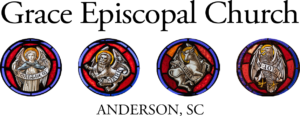Why did Jesus have to die?
Did he give us an example to follow, an example of a holy life and the consequences of that holy life?
Or was he a sacrifice? An offering up? Was he trading his life, turning his life over to the powers of death and darkness so that the many who were in that prison of death and darkness may be set free? Was he a sacrifice to set us free from the power of sin?
Which is it?
An example of a holy life, or a trade off?
This is the great mystery of the atonement, the horror and the beauty of this Friday that we call Good.
Which is it?
Christians have literally argued and debated and prayed over this question for almost 2000 years.
There are even names for the two groups, for the two perspectives.
But the logic of this day defies all our conventions of reason.
Somehow the sense of this day is better understood not by theologians but rather by those who feel deeply, who feel deeply the bite and contradiction of this day and are torn by it. The poets, the hymn writers, the artists, those who pray deeply with their hearts, the manual actions of how we worship, they teach us to pay attention to our heart and to who holds the devotion of our hearts.
Today is best expressed by music and poetry, by art and prose, by acts of devotion, by worship, by kneeling and silence and tears. There is a different logic to this day than the conventional reason of most theology. Today belongs to the logic of tragedy, to the reason of grief, to the philosophy of tears, to the argument of outrage, to the rhyme and meter of passion, to the definition of pain, to categories of agony and anguish, and more than anything to the sensibility of shame.
Why did Jesus have to die?
Today we feel that question and that pain deeply.
Why do those we love suffer and die?
Why do we hurt each other?
Why does God allow this?
Why doesn’t God do something?
Or is this death God’s answer to our darkness?
Dark tough questions.

